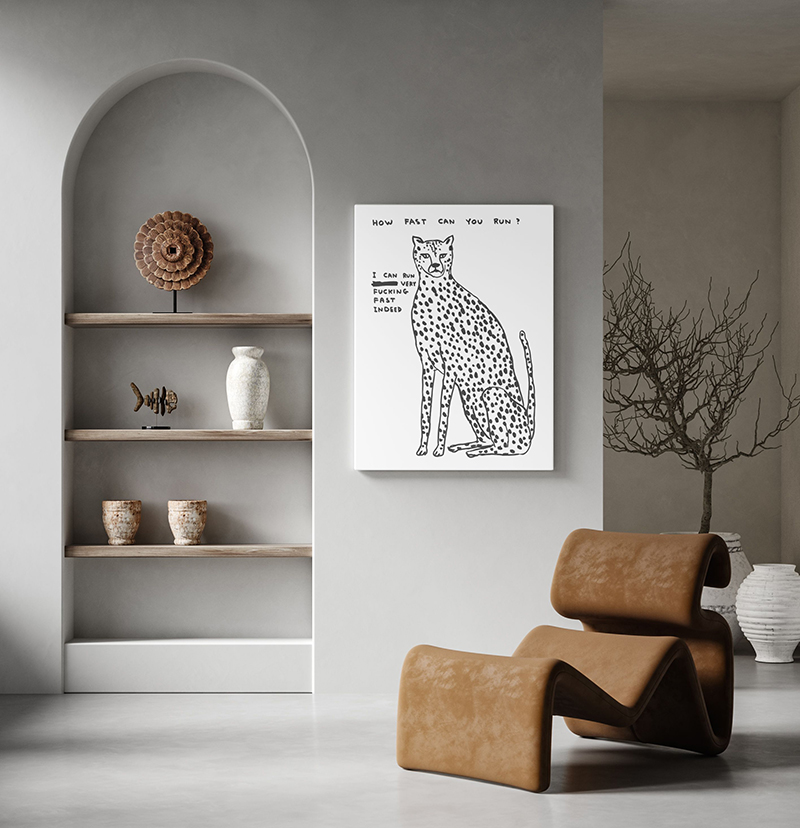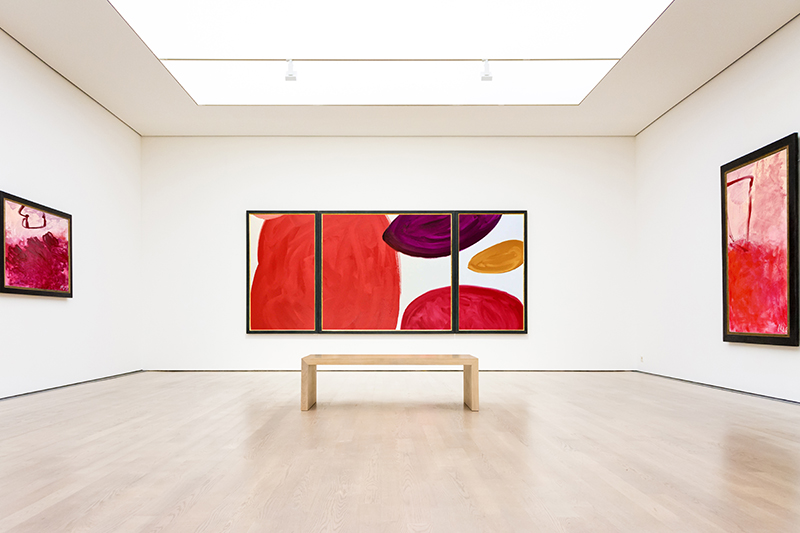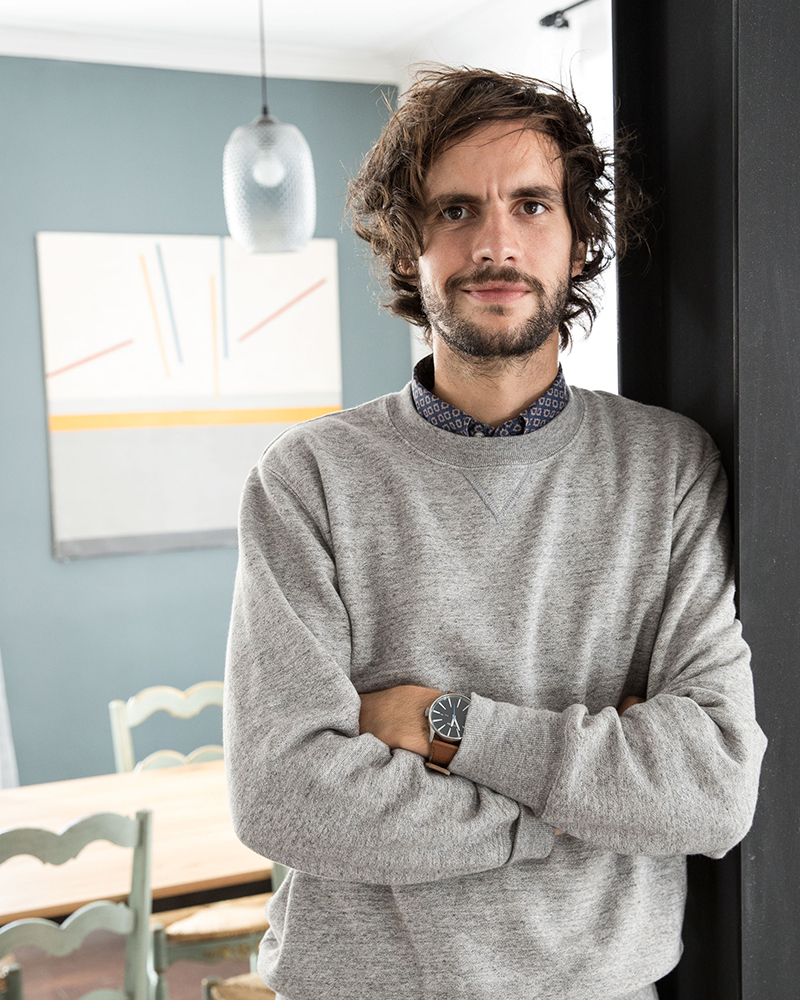Nov. 2, 2022
Convinced that the purchase of an artwork need not be a complex ceremony of high-priced auctions, abstruse artspeak and daunting gallery visits, François-Xavier Trancart, along with business partner Hugo Mulliez, decided to develop an alternative way to buy art. In 2013 they launched Artsper, an online platform that uses the familiar format of internet shopping to make art accessible to a wider audience. Like many online markets, buyers can order works, including paintings, sculptures and even design objects, try them out in their own homes and, if the fit is not right, return them within 14 days. At first glance, a platform boasting 200,000 artworks from 25,000 artists organised by a set of filters, one of which is fame, seems counter-intuitive, as if depreciating creativity to an exchangeable consumer good. However, this could just as well be an ingrained prejudice against those who cannot necessarily travel to Basel or a major centre to purchase an original work. One way to increase the audience for art is not just to get people into museums, but also to bring original art into people’s homes.
Artsper is evidence of a changing culture of collecting. In our conversation, co-founder and CEO François-Xavier Trancart explains the shifting demographics of collectors, as well which countries are playing a leading role in the expansion of the art market. This expansion is naturally predicated on accessibility, both in price range and delivery. Artsper is not designed for the wealthy collector, but is a platform for the occasional buyer and curious beginner as well. In addition to offering a specialised art advisory service, they publish resources for those who know little to nothing about the market. For example, “The Collector’s Guide,” which consists of the ABCs of art and collecting, starts with the most fundamental of questions: “What is an artwork?” Their information services extend to a YouTube channel, a blog, as well as an interview section, which offer behind-the-scenes glimpses into the practices of artists and the work of gallerists. Moreover, with a selection of design objects such as lamps, furniture and textiles, they are also blurring the divide between art and craft. Just as we cannot speak about one art world any more, it is increasingly clear we also cannot speak of one art market.
Berlin Art Link: What are the biggest barriers when it comes to buying art for new collectors?
François-Xavier Trancart: For new collectors, entering the art market can feel intimidating, especially when that market is unknown territory. Which artists should you buy from? Where should you go to buy the right piece? It’s hard enough for amateurs to express an opinion on art within an industry that oftentimes seems fairly unapproachable, let alone actually enter that world. That’s exactly where Artsper comes into play: No judgments, no confusion, no barriers. Art is emotional just as it is visual, and we aim to provide everyone with a piece tailor-made to their needs.
BAL: Since you started the business in 2013, do you see these barriers, with the rise of NFTs and digital art for example, decreasing or increasing?
FXT: Both. I suppose you could say that NTFs increase the unapproachability of the art market; a niche sub-category of the art world, solely reserved for experts. However, it could also be argued that NFTs allow for a certain democratisation of the market. They allow everyone, not just a select few, to create, buy, and sell artworks, opening the gates for new players in the art market.

David Shrigley: ‘How fast can you run?,’ 2021, photomontage // Courtesy of Artsper
BAL: Where do you find most of the collectors are coming from and is the profile of collectors changing?
FXT: Historically, Europe and the US have dominated the international art market not only due to their political and economic power, but also due to the sheer quantity of works on offer. This is no longer the case, however, and with China now the second strongest player (20%), and Japan and Korea also gaining in power, the geography of the art market is shifting. The Korean market, for instance, has quadrupled its art sales in the past two years, aided by an outstanding offer of works, and the popularity of Korean artists such as Kim Tschang-Yeul and Park Seo-Bo.
There is a recurring pattern that happens when an emerging player enters the international art market. First, collectors will buy historical, cultural objects specific to their country or region. Then, they invest in local contemporary works. Finally, they begin to invest in works from other countries.
In terms of age, Millennials (1981-1996) and Gen X (1965-1980) are the most prolific art collectors. They are then followed by Baby Boomers (1946-1964) and Gen Z (1997-2012). Although under 25s are not yet the main players on the art scene, as the generation who spends the highest proportion of their earnings on art, they soon will be a force to be reckoned with.
Many clients buy art now for the first time, but do not necessarily define themselves as collectors. Regardless of age, we see increasingly that our buyers look for three things when purchasing art: transparency, honesty, and accessibility.
BAL: How stable of an investment is art?
FXT: Art is definitely a long-term investment. We can’t deny the instability of today’s economic climate, however art is fairly stable compared to traditional investment models such as stocks or bonds. We see that it tends to maintain its value despite fluctuations within the economy, offering collectors an investment which contains great economic value, as well as aesthetic.
Obviously, the value of a piece greatly depends on how revered the artist is. However if I were to give a piece of advice to those wanting to invest into art, I would say to start small and look out for emerging talents. If that artist happens to make it big, the reward on your investment won’t be too bad at all! I would also advise sticking to one specific medium or category, that way you can get to know that sector of the industry better, and become more comfortable investing within it. Once you start to gain a bit more confidence, you can then start mixing things up.

Paul Landauer: ‘Untitled Works,’ 2020-2021 // Courtesy of Artsper
BAL: How do you find the galleries you want to work with?
FXT: When Artsper started 10 years ago, we were the ones proactively contacting galleries to work with. Today, it’s the galleries who are the ones contacting us! Since the Covid-Pandemic, galleries have become much more aware of the necessity to be visible and also sell online. As it stands, we have over 1,800 partner galleries worldwide. Our team selects galleries based on their professionalism, their relationship with the artists they represent, and their ethics. Through having such a broad range of galleries, it allows us to diversify the product range offered, be it different styles, movements or media.
BAL: Could services like Artsper be alternatives to expensive art fairs, many of which were cancelled during the COVID-19 pandemic?
FXT: In 2020 our sales increased by more than 60% and 400 new galleries subscribed to our marketplace. It became more apparent than ever before that galleries need to have an online presence in addition to a physical one. You could consider Artsper as an extension of a gallery’s physical space. We showcase exhibitions, collections, interviews with art market personalities, news – the same sort of thing you would find in an art fair, just in a less intimidating and far more accessible setting.

François-Xavier Trancart: CEO and co-founder of Artsper
BAL: What is it about art and the art market that attracted you?
FXT: I was attracted both by the emotional element of art, but also by the dynamism of the art market and what it could offer. With Artsper, our goal is to unite the market and change the ethos of industry: from gallerist to investor, curator to art enthusiast. At its core, we want to render a sector that is often considered the reserve of a select few, accessible to all.
Additional Info
Berlin Art Link readers can receive a special promotional offer from Artsper valid until January 31, 2023: BERLINART5





















